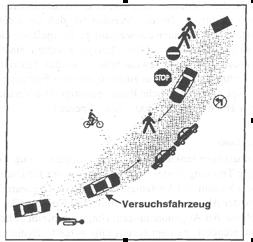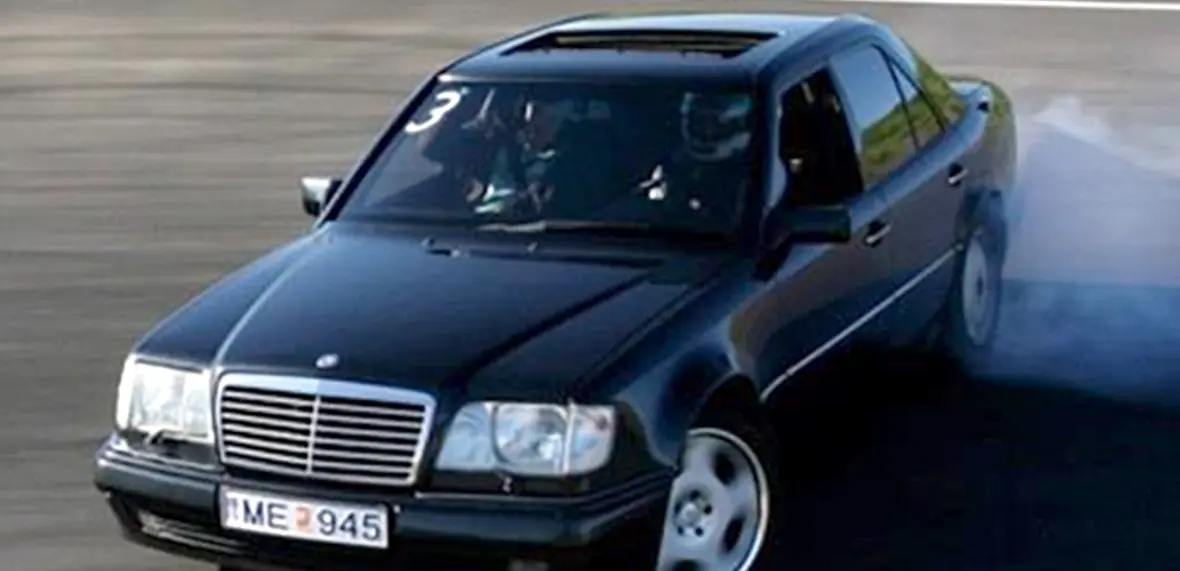You Can’t Have the Keys to the Mercedes: Understanding Alcohol Impairment
Alcohol impairment is a critical area of forensic research, particularly when it comes to driving ability. The effects of alcohol on drivers are both fascinating and extensively documented. One particularly revealing area of study involves testing drinking drivers on a closed course track. This method offers a more realistic environment than sterile laboratory settings, though it carries inherent risks, as demonstrated by a pivotal German study.
BARTL, G., C. BRANDSTATTER, A. HOSEMANN, AND C. REITER. “Saccadic Eye Movements and Reactions of Drivers With Low Alcohol Concentrations’ [German], Blutalkohol, 35: 124-138, 1998 (1 Table, 5 figures, 9 references).
This study, listed as WOA50305 in Wigmore on Alcohol, provides compelling evidence on how even low levels of consumption can lead to significant alcohol impairment.
The Groundbreaking Closed-Course Experiment
The study utilized a circular track approximately 1.5 miles long. Each test drive lasted about 15 minutes. To best simulate real-world conditions where alcohol-impaired collisions frequently occur, researchers conducted the trials at night and during winter. Testing was immediately halted during snowfall or icy conditions to ensure safety. Participants operated a specially instrumented Mercedes W124 300D, a vehicle equipped with technology to meticulously track eye movements and driver responses. They were instructed to maintain a steady speed of 45 km/h (27 mph) throughout the course.
A Surprise Test for Alcohol Impairment
To truly gauge the real-time effects of alcohol impairment, researchers engineered a surprise traffic situation in the final 30-60 seconds of the drive. A horn, triggered by a photoelectric beam, signalled the start of this sequence designed to mimic the unpredictability of real highways. The events unfolded as follows:
- A pedestrian crossed the track at a safe distance, entered a parked car, and turned on its headlights.
- A bicyclist with a light appeared on the left side of the road.
- A Volkswagen car approached from the opposite direction.
- The route passed a junction with three traffic signs (requiring no driver action).
- Two additional pedestrians walked on the left side of the track.
- A grey foam obstacle (3 feet x 1.5 feet x 1.5 feet) suddenly appeared, forcing the driver to take evasive action.

This complex scenario, centred around the “Versuchsfahzeug” or test vehicle, was crucial for measuring driver performance under duress.
Analysing the Data on Driver Performance
The study involved 23 sober subjects and 25 who had consumed alcohol. The drinking group consumed their beverage of choice—beer, wine, vodka, or rum—resulting in a mean Blood Alcohol Concentration (BAC) of approximately 0.070 g/100mL (ranging from 0.054 to 0.092 g/100mL) at the start of the drive.
When reacting to the final grey foam barrier, the data was telling. The table of results clearly showed that drivers experiencing alcohol impairment had slower reaction times and a higher rate of both collisions and near misses compared to their sober counterparts.

Furthermore, this alcohol impairment affected cognitive recall; drinking drivers remembered significantly fewer details (3.7 items on average) of the surprise scenario than sober drivers (5.9 items).
Miraculously, the only damage recorded was to the Mercedes’ front spoiler, caused by a drinking driver who veered onto an icy patch.
The Unavoidable Conclusion on Low-Level Impairment
The study’s conclusions are stark. Even at the low speed of 45 km/h, a definitive impairment of driving ability was observed in subjects with BACs below the common 0.08 g/100mL legal limit. This alcohol impairment was undeniable. The authors noted their findings align with the seminal Borkenstein Grand Rapids Study, which also confirmed that driving ability is compromised at levels under 0.08 g/100mL.
This research underscores a critical truth: alcohol impairment begins long before one reaches the legal limit. The findings from behind the wheel of that instrumented Mercedes are a powerful reminder of the risks associated with drinking and driving.
For further reading on alcohol impairment and forensic toxicology, explore the expertise available at Wigmore on Alcohol.
Contact us for a free forensic evaluation now!
*All the references cited may be found in WOA 2e in the appropriate section according to the number.”
Alcohol Impairment FAQs
What is alcohol impairment?
Alcohol impairment refers to the negative effects alcohol has on a person's physical and mental abilities, such as slower reaction times, reduced coordination, and poor judgement, which can significantly impact driving ability.
At what BAC level does alcohol impairment begin?
This study showed that alcohol impairment can begin at Blood Alcohol Concentration (BAC) levels below 0.08 g/100mL, which is the common legal limit for driving in many places.
How was the German study on alcohol impairment conducted?
The study tested drivers on a closed course track at night in a specially instrumented Mercedes, measuring their reactions to surprise traffic situations at a controlled speed of 45 km/h.
What was the surprise traffic situation in the study?
It was a sequence of unexpected events including pedestrians, a bicyclist, an oncoming car, and a foam obstacle, designed to test drivers' reactions under realistic conditions.
Did the study find a difference between sober and drinking drivers?
Yes, drinking drivers had slower reaction times, more collisions and near misses, and remembered fewer details of the surprise scenario compared to sober drivers.
What was the average BAC of the drinking subjects in the study?
The mean BAC of the drinking subjects was approximately 0.070 g/100mL at the beginning of the test drive.
Were there any accidents during the closed-course testing?
Fortunately, there were no injuries. The only damage was to the front spoiler of the Mercedes when one drinking driver veered onto an icy patch.
How does this study's findings relate to the Grand Rapids Study?
The authors state their results agree with the Borkenstein Grand Rapids Study, which also demonstrated that driving impairment occurs at BAC levels below 0.08 g/100mL.
Why is closed-course testing considered valuable for studying alcohol impairment?
It provides a more realistic driving environment than a laboratory while maintaining a greater level of control and safety than testing on public roads.
What was the one vehicle used in the German alcohol impairment study?
The subjects drove a specially instrumented Mercedes W124 300D automobile that could track their eye movements and responses.
Recent News

You Can’t Have the Keys to the Mercedes: Understan...
Alcohol impairment is a critical area of forensic research, particularly when it comes to driving...
Read More
FVC and its Critical Relevance to Breathalyzer Tes...
An American criminal lawyer recently enquired about a female asthmatic client he had who was...
Read More
The Fatal Intersection of the Drunk Driver and Alc...
Following on from my previous post, an alcohol intoxicated pedestrian not only faces an increased...
Read More
Are Marijuana Smokers Safer Drivers than Drinkers?...
This is the first blog in the new area of drugs that I will be...
Read More